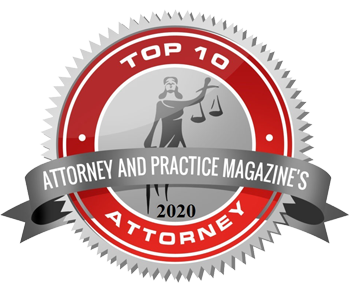Law enforcement officers use DUI checkpoints to perform random sobriety checks for drivers. These checkpoints are usually the first step of DUI charges for alleged intoxicated drivers. However, there are different regulations and laws surrounding DUI checkpoints that an attorney can explore if you are arrested. We at The Law Offices of Ross Howell Sobel understand all the legalities surrounding these checkpoints and their implications, and we are ready to offer you legal assistance if you are arrested. We serve the Los Angeles area and San Fernando Valley.
Free Consultation 818-582-2350
An Overview of a DUI Checkpoint
California vehicle code 23152(a) makes it a criminal offense to operate an automobile under the influence of alcohol or any other related drug. Motorists driving under the influence lack the mental and physical ability to operate a vehicle like a cautious sober driver due to impaired vision and judgment. Therefore, to enhance safe roadways, DUI checkpoints are set by law enforcers randomly on the road to arrest any motorist violating vehicle code 23152(a) VC by putting other motorists and pedestrians at risk of injuries and damages.
DUI checkpoint is just a roadblock where law enforcement officers pull over vehicles to check if the motorist is drunk driving against the law. A DUI checkpoint is an effective tool for maintaining road safety and preventing potential injuries and crushes. Motorists DUI of alcohol or any other type of drug might not be able to make sound judgment and decisions on the road like a sober, cautious person hence more accidents risks.
DUI checkpoints on the roadway prevent most grisly road accidents that happen due to intoxication or drunkenness. At any DUI checkpoint, the police officer should pull you over only after reasonably suspecting that you might be drunk driving, for instance, if you were swerving. Otherwise, unreasonable search and confiscation are unnecessary at any DUI checkpoint. A police officer will arrest you for DUI after conducting particular sobriety tests to determine your level of intoxication. Apparently, in California, driving with a BAC level, which is below 0.08%, does not constitute a DUI charge.
After a DUI arrest, you must retain a reliable DUI attorney such as The Law Offices of Ross Howell Sobel to protect your legal rights because police officers often make mistakes during a DUI arrest. Police mistakes during a DUI arrest can make a person get a wrongful conviction and lose his/her driving license. Also, California DUI laws can be very overwhelming and complex to a layman without DUI attorney assistance.
What a Driver Should Expect at a DUI Checkpoint
If you’ve never been pulled over by police officers at a DUI checkpoint, you are most likely to come across them sooner or later because DUI checkpoints are everywhere in Los Angeles and San Fernando. At a DUI checkpoint, the police officer will conduct certain activities to determine if there is any sign of intoxication on a suspect driver. When a police officer signals your vehicle at DUI checkpoint, below are activities you should expect:
Stop
DUI checkpoint in California is legal as long as law enforcers are observing particular protocols for conducting a DUI arrest. Usually, police officers provide prior notification and publicity about a DUI checkpoint at a particular location where they assure drivers of a reasonable stop duration. Therefore, after a signal by the police officer at any checkpoint, you must stop your vehicle beside the road to know why he/she wants you to pull over your vehicle.
Swerve
After stopping your car, the police officer will explain to you why your vehicle has been selected to stop at a DUI checkpoint. Mostly a police officer stops a vehicle at a DUI checkpoint if he/she notices some signs of unreasonable driving such as swerving. A motorist will have no obligation to pass a DUI checkpoint after a police officer selects his/her vehicle to pull over. Choosing to turn around is not a crime itself as long as the driver follows the right traffic laws when turning around or changing lanes. A police officer will otherwise ask you to stop if you violate other traffic laws like improper/unsafe lane change.
Search
If a traffic police officer had a reasonable belief that you were drunk driving due to your reckless actions on the road, he or she would then proceed to conduct some sobriety tests. Sobriety tests are procedures a police officer carries out to determine if you’re in a good physical and mental condition to drive a vehicle safely like a cautious sober driver. All searches that a police officer conducts at DUI checkpoint should be reasonable before charging a suspect driver with a DUI offense. The police officers will conduct a few sobriety tests before arresting you for a DUI offense after noticing some signs and evidence of intoxication.
Sobriety Tests in a DUI Checkpoint
Sobriety tests are essential in establishing a suspicious driver level of intoxication and is his/her ability to drive like a cautious sober individual before making a DUI arrest. Although some of the methods police officers use to conduct sobriety tests are legitimate, there are still chances of errors that a DUI attorney can use to defend you against a DUI charge. Below are common sobriety tests at a DUI Checkpoint:
Field Sobriety Tests
Field sobriety tests are a sequence of mental and physical exercises that a police officer administers before making a DUI arrest. A police officer at a DUI checkpoint will pay attention to particular signs of intoxication during a conversation with a suspect driver, such as slurred speech, bloodshot eyes, or strong alcohol odor from the driver’s mouth. When the police officer detects signs of intoxication, he/she will ask the driver to get out of the car and perform the following standard field sobriety tests to determine the driver’s level of intoxication:
-
Horizontal Gaze Nystagmus Test
Nystagmus is a sight disorder whereby a person’s eyes make an uncontrollable and repetitive movement, which can affect a person's vision, coordination, and balance. Although nystagmus might happen due to a person’s underlying health conditions, intoxication can also trigger nystagmus conditions, which affect a person’s ability to drive a vehicle like a cautious person. Police officers conducting nystagmus tests on a DUI suspect will ask the driver to gauze horizontally to detect if there is any involuntary movement of the driver’s eye pupil, which is an indicator of nystagmus.
-
The Walk and Turn Test
The walk and turn test is also an effective and suitable tool for testing a driver’s ability to pay attention to a series of events both mentally and physically while following directions. The police officer conducting walk and turn tests will ask the driver to take a maximum of nine heel-to-toe walking steps on an imaginary or real line on the ground back and forth to notice if there are any signs of impairment. During a walk and turn test, the police officer pays attention to the driver’s ability to follow directions and keep balance.
-
One Leg Stand Test
During a DUI arrest field sobriety tests, police officers will require a suspect driver to stand with one leg while the other leg is about six feet above the ground to establish if he/she is sober. During a one-leg stand field sobriety test, the driver must remain still in one position and count 1001 to 1030 while looking at his/her foot on the ground. If the police officer notices that you’re swaying or using your arms to balance, you might receive a DUI arrest because those are signs of intoxication.
NHTSA has proven the above three field sobriety tests are standard and useful when a motorist is driving with a BAC of 0.08% or above. However, performing poorly in the above field sobriety test does not always imply that a driver was drunk driving. Therefore, a DUI attorney can always find some pieces of evidence to rebuke the performance of the suspect driver field sobriety tests.
Blood Alcohol Concentration Tests
A blood alcohol concentration test (BAC) is another form of sobriety test a DUI checkpoint. Normally. Police officers at a DUI checkpoint use breathalyzers to know if a driver was drunk driving. A breathalyzer test is a common sobriety test where a police officer uses a particular device to detect and estimate alcohol in a suspect driver's breath vapor.
Most of the time, suspect drivers who cannot perform field sobriety tests or blow a breathalyzer due to some understandable reasons must perform a chemical BAC test through their blood or urine. In such a situation, the police officer conducting a sobriety test will request the suspect driver to take his/her blood or urine sample to the police station for chemical testing. A blood test is more accurate when testing a suspect driver's BAC level than other sobriety tests at DUI checkpoint. Breath or urine tests use mathematical formulas to get an estimate of the driver’s BAC level.
If the police officers at a DUI checkpoint conduct the above tests and confirm that you were DUI of drugs or alcohol above the legal limit, you’ll receive a DUI arrest. After DUI arrest, the drunk driver will face two different legal proceedings, that is:
-
A criminal arraignment in court for DUI charges
-
Department of Motor Vehicle (DMV) hearing
During these two legal proceedings, you must seek the services of a DUI lawyer to protect your legal rights and interests because they can result in some harsh punishments.
Find a DUI Attorney Near Me
A simple pull over at A DUI checkpoint might result in serious criminal charges like driving under the influence and related charges. We at The Law Offices of Ross Howell Sobel understand that you want to avoid as many negative consequences as possible, and we are here to help you. If you are in Los Angeles or San Fernando Valley, get in touch with us at 818-582-2350 to discuss your case.







